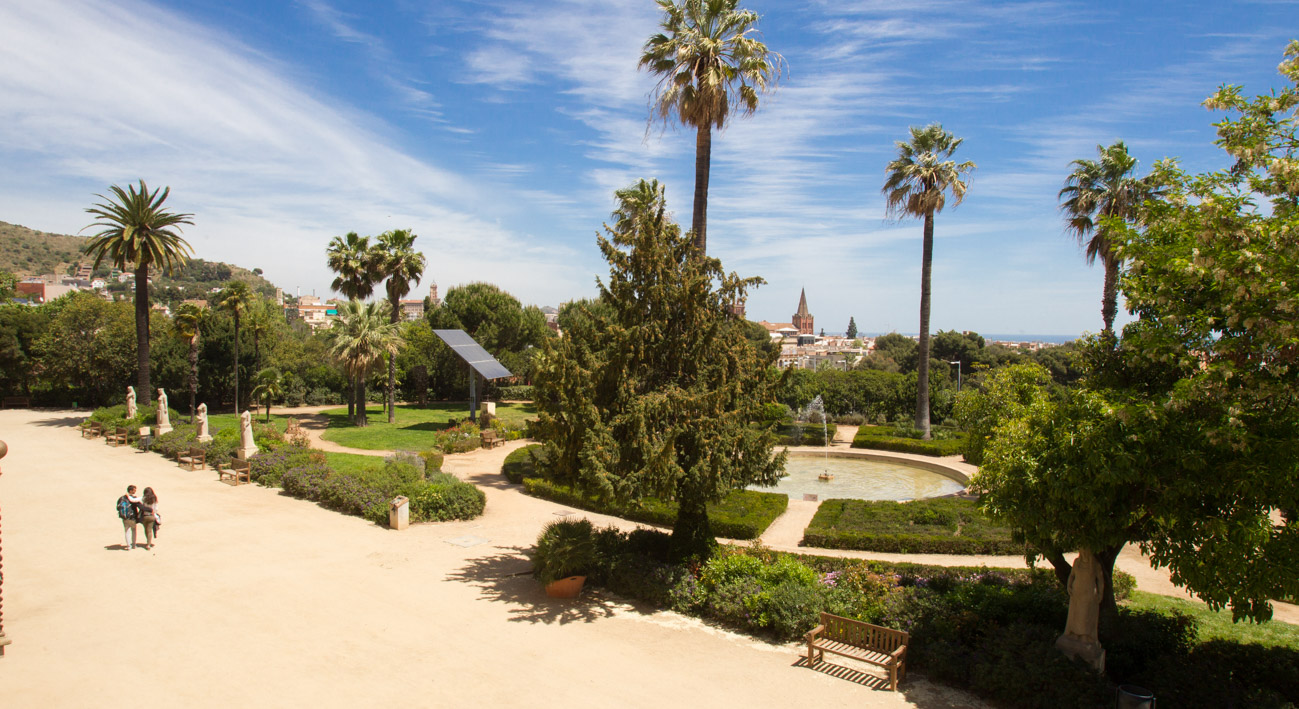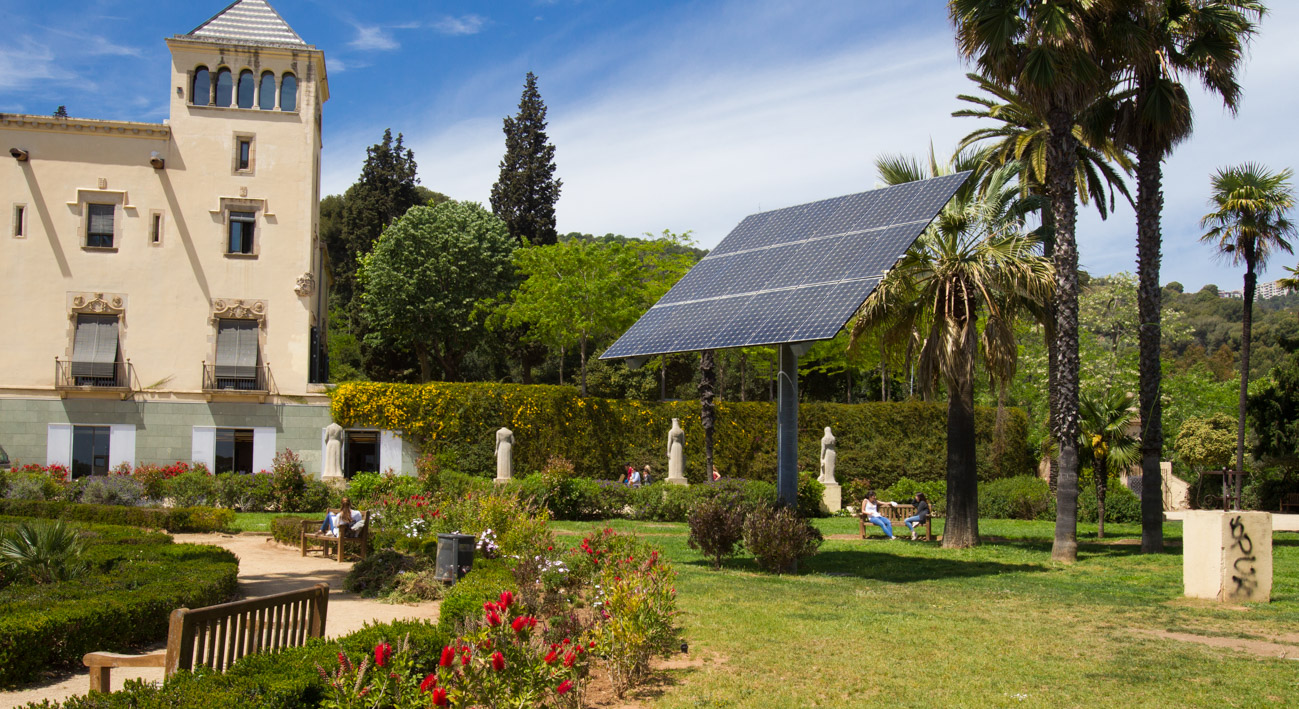These gardens on the sea-facing slope of the Collserola range are among the few left in Barcelona that bear witness to the stately gardens created by the Catalan aristocracy at the end of the 19th century.
Romantic and French in character, the Jardins de Can Sentmenat are of undeniable testimonial value, as they have maintained the original structure and typology.
The enclosure walls around the building are covered in climbing plants and the entire terrace offers lovely views of Barcelona and Collserola which, together with the sky, provide an exceptional backdrop to the gardens.

History
Both the gardens and house date back to the end of the 14th century. The Teixidó manor house was built by Guillem Teixidó after he purchased the estate in 1325. It was later bought by the Sentmenat family at the start of the 17th century. The estate, which covered about 10 hectares, had a garden, a vegetable garden and a large wood. In 1960 the Sentmenats rented out the mansion to the French consul and sold it in 1974 to the Núñez i Navarro property developer. Negotiations between the City Council and the developer to avoid the destruction of such a notable piece of architectural and nature heritage continued until 1992, when an agreement was reached for it to be leased out. The Council leased it to the EINA School of Design and Art for 35 years from 1994.

Art and Architecture
In front of what was the mansion of the marquesses of Sentmenat, seven female figures sculpted by an unknown artist flank the avenue separating the gardens from the building. They symbolise the Sentmenats and their related dynasties: the Sarrieras, the Ciutadillas, the Patiños, the Jordáns de Urríes, the Osorios and the Despujols.
As regards the old residence of the marquesses, the master builder Andreu Bosch turned the original manor house into a stately Neo-Gothic mansion in 1779. It underwent further changes in the 19th century, when it was turned into the Romantic-style mansion that it is today. Decorative elements from the 15th and 16th centuries were also added, notably the sculptural door and window frames, which came from the Sentmenats’ other properties.
Improvements made to the building once it passed into municipal ownership included the gargoyles by Sergi Aguilar on the facade and a mural at the entrance by Albert Ràfols Casamada, the founder of the EINA School.
-
- Phone number
- Information: 010
-
- Accessibility
- Accessible for people with physical disabilities
-
- Titularity
- Public center
- Address:
- C Can Caralleu, 6*14
- Districte:
- Sarrià-Sant Gervasi
- Neighborhood:
- Sarrià
- City:
- Barcelona





